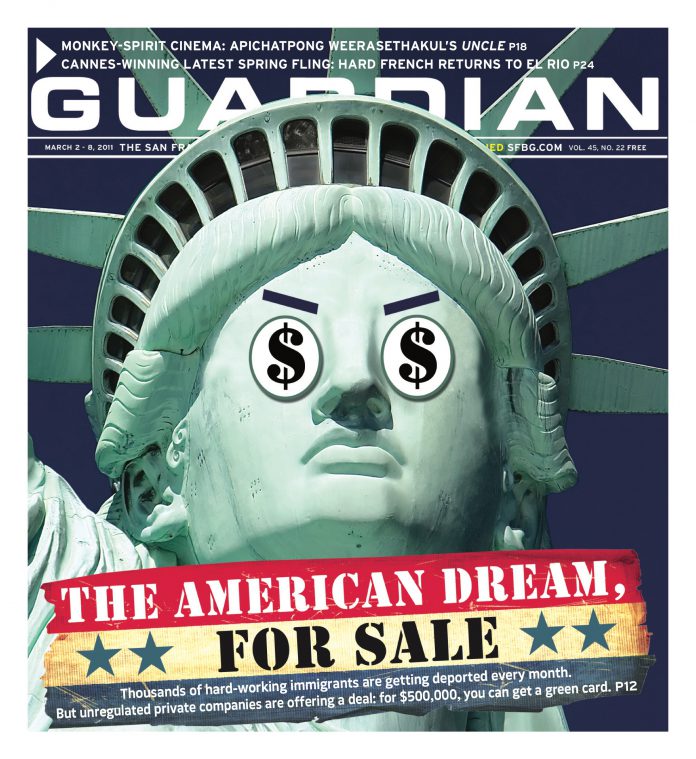DANCE Rehearsing The Unsayable at the Margaret Jenkins Dance Lab, the performers of Hope Mohr’s newest work march together. The row of marchers is composed of her company members (Cameron Growden, Derek Harris, Risa Larsen, Rogelio Lopez Garcia, and Tegan Schwab), and artistic partners who are war veterans (Carol Roye, Katharine Conley, Paul Ramirez, and David Fish). They stand erect with puffed chests, and settle only slightly when a voice calls, “At ease.” Taking turns, the performers speak, shift formation, and splinter into dance, bravely sharing personal anecdotes, including the ugly, the tender, and the uncomfortable.
Mohr’s deeply human collaboration springs from work with VA medical centers in San Francisco and Palo Alto, and Swords to Plowshares. “We’re a country at war, and it’s easy to forget about that. The project is in part my response to feeling isolated from that,” she explains, in interview. “I wanted to do something to engage dancers and the general public in the emotional reality that we are a country at war.”
Mohr conducted seven months of outreach, culminating in workshops with a small group of veterans. Influenced by Daria Halprin and the Tamalpa Institute, the workshop process involved first creating a safe space for the highly-charged work. Ground rules made clear that workshop participants could select what would be included for the performance. Each veteran maintained ownership of his or her story.
Improvisations pairing dancers with veterans incorporated drawing, text, and movement to explore themes like home, the flag, and the body. In drawing the dancing, and dancing the drawing, Mohr aimed to “try to triangulate that relationship, so the stories go beyond the head space and it becomes a more body-based, physical storytelling process.”
Workshops for The Unsayable adapted the methodology Mohr developed in 2008 when working with cancer patients for her piece Under the Skin. While her goal is not to heal anybody, the collaboration provides an opportunity for creative expression and community engagement while commenting on the role of art in time of war. “This project reflects my interest in making work that is not only socially engaged but also aesthetically sophisticated,” she says. “It’s been a huge challenge to balance the integrity of a group emotional process and also to make choreography that is very well-crafted.”
Using transcriptions from the workshops, novelist Bart Schneider compiled the script and voice-overs for the performance. “My role coming in was to help facilitate conversations between the veterans and the dancers,” says Schneider, when asked about this process. “Even from the first session, it was really intense stuff. And it’s an interesting process when you don’t happen to be a therapist, because stuff comes up and you can really tap into some deep material that can go any which way. I think as a group we did a really good job of building a sense of trust.” In the studio, eye contact and careful listening helped build compassionate relationships between the dancers and veterans.
“I think it was a transformative experience for everyone.,” says Schneider, who has also worked on VA oral histories. “[The veterans felt] ‘Wow, I’m not alone, these people are really listening, and I get to experience the complex qualities of my experience in more ways than just verbally.’ I think sometimes when material like this is involved, the art is a bonus. The experience itself is what really matters.”
Regarding the transition from workshops to stage, Mohr says, “The performance piece is an important part for the veterans. I’m trying to support them in performing with their senses open, so that it’s a continuation of a process that’s about self-awareness and bodily awareness. I really believe in the dancing body. As dancers, we are trained in the somatic sense, having a self-sense of where we are in space and time — being really present in the moment and in our bodies; being really connected to what’s going on internally. I think all of those skills are relevant for healing from trauma.”
THE UNSAYABLE
Thurs/3–Sat/5, 8 p.m.; Sun/6, 2 p.m.; $10–$18
Z Space
450 Florida, SF

